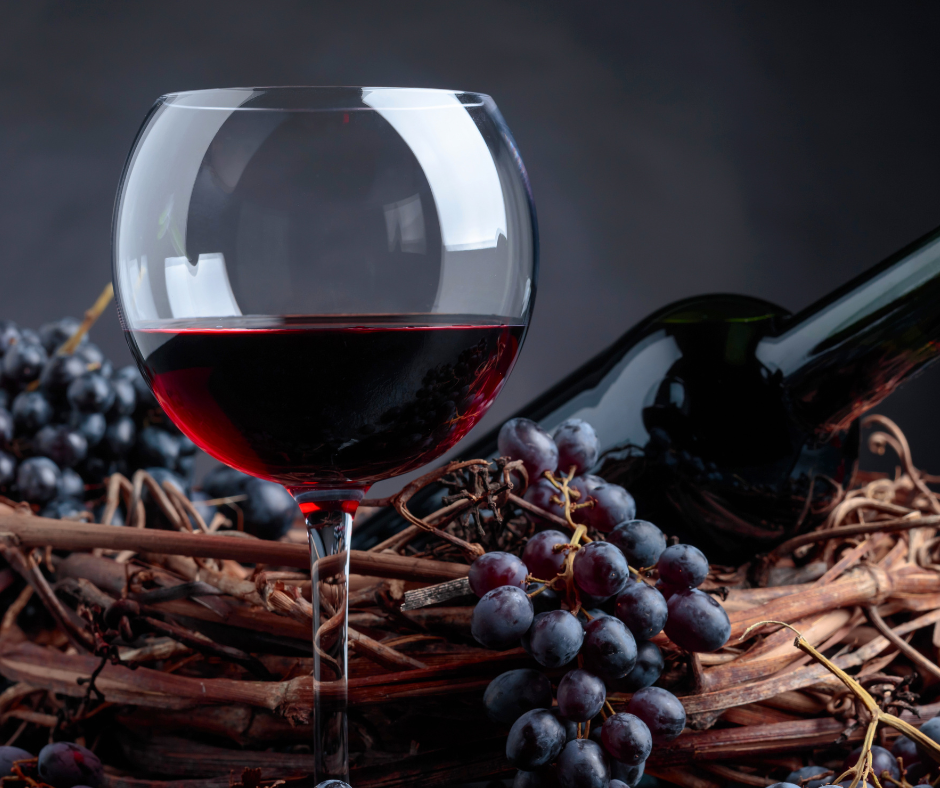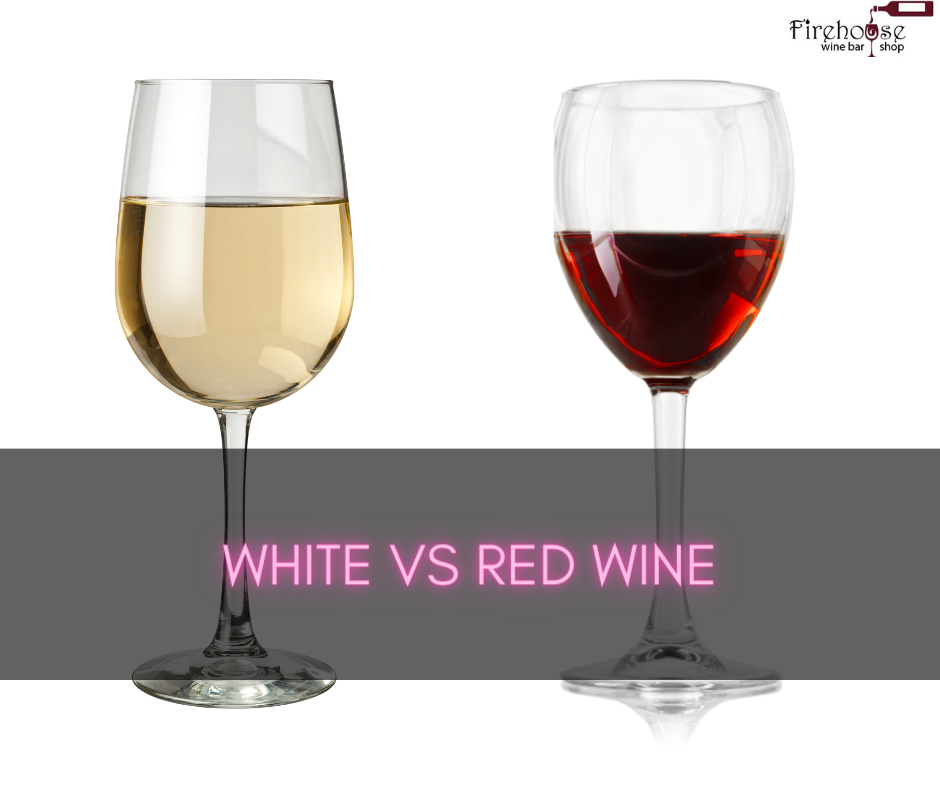Introduction
For wine enthusiasts and novices alike, the debate between white and red wine is a timeless topic that stirs passionate opinions and preferences. With an endless array of flavors, aromas, and characteristics, it can be challenging to choose between the two. But fear not, as we dive into the great debate of White vs Red Wine.
The Great Debate: White Wine Vs. Red Wine
When choosing between white wine and red wine, there are several key differences to consider. Let’s explore them:
- Color and Body: The most apparent distinction is the color. White wines can range from pale yellow to golden hues, while red wines present a spectrum of deep reds, purples, and even brick-like shades. Regarding the body, white wines tend to be lighter and refreshing, while red wines offer a fuller and more robust mouthfeel.
- Flavors and Aromas: White wines are often known for their vibrant, crisp, and citrusy flavors. Think of zesty lime in a Sauvignon Blanc or the tropical fruit notes in a Chardonnay. On the other hand, red wines encompass a rich complexity with flavors like cherry, blackberry, plum, and even hints of chocolate or tobacco.
- Pairing Options: Choosing white and red wine can greatly influence food pairing opportunities. White wines generally pair well with lighter dishes such as fish, seafood, salads, and poultry. Are you tossing a crisp Sauvignon Blanc with a plate of oysters? Delightful! In contrast, red wines are often a go-to for heartier fare like red meat, pasta dishes, stews, or aged cheeses.
- Serving Temperature: Another factor to consider is the ideal serving temperature for each wine. White wines are usually best when served chilled, around 45-50°F (7-10°C). Red wines, on the other hand, benefit from slightly warmer temperatures, typically between 60-65°F (15-18°C), allowing their flavors to flourish fully.
Ultimately, the choice between white and red wine boils down to personal preference and the occasion. Whether you lean towards a crisp and refreshing white wine or a full-bodied red wine, exploring the diverse world of both types will surely enrich your palate and enhance your appreciation for all things wine-related. Cheers!

White vs Red Wine: Health Benefits
Comparison Of Health Benefits Between White And Red Wine
Regarding the great debate of White vs Red Wine, health benefits are often discussed. While both types of wine contain antioxidants and other beneficial compounds, red wine tends to steal the spotlight.
Red wine is associated with a higher content of resveratrol, a polyphenol found in grape skins, which has been linked to various health benefits. Research suggests that resveratrol has anti-inflammatory and antioxidant properties, which may help protect against heart disease and certain types of cancer. Additionally, red wine has been associated with improving heart health and reducing the risk of cardiovascular diseases due to its effect on cholesterol levels and blood clotting.
On the other hand, white wine also offers health benefits, although to a lesser extent. White wine contains lower levels of resveratrol compared to red wine, but it still contains antioxidants that can have positive effects on health. It has been found to improve lung health and decrease the risk of certain respiratory illnesses. White wine is also less likely to trigger headaches or migraines compared to red wine due to its lower level of histamines and tannins.
Factors To Consider When Choosing Based On Health Reasons
When choosing between white wine and red wine based on health reasons, it is essential to consider your specific health needs and preferences. Here are a few factors to consider:
- Heart health: If you are primarily concerned about heart health and cardiovascular benefits, red wine may be the better choice due to its higher resveratrol content.
- Respiratory health: If you have respiratory issues or are prone to headaches, white wine may be a safer option due to its lower histamine and tannin levels.
- Taste preferences: Ultimately, choosing between white and red wine should also come down to personal taste preferences. If you enjoy the flavors of red wine and are not concerned about specific health benefits, feel free to indulge in a glass of red. Similarly, if you prefer the lighter and crisper taste of white wine, go for it.
It’s important to remember that moderation is key when consuming wine for health benefits. Excessive alcohol consumption can have detrimental effects on health, outweighing any potential benefits.
Flavor Profiles
Differences In Flavor Between White And Red Wine
Regarding the great debate of White vs Red Wine, one of the key differentiators is the flavor profile. White wine is generally known for its light and crisp taste, with flavors ranging from citrus and tropical fruits to floral and mineral notes. On the other hand, red wine is distinguished by its deep, rich, and robust flavors, often characterized by dark fruits like blackberries, cherries, and plums, as well as earthy and spicy undertones.
Characteristics Of White Wine Flavors
White wine offers various flavors that can vary depending on the grape variety and winemaking techniques. Some of the common characteristics found in white wines include:
- Citrus: White wines can exhibit vibrant notes of lemon, lime, grapefruit, and orange, adding a refreshing acidity to the palate.
- Tropical: Many white wines showcase tropical fruit flavors like pineapple, mango, and passionfruit, creating a juicy and exotic sensation.
- Floral: Delicate white wines often have floral aromas such as jasmine, honeysuckle, or elderflower, lending a fragrant quality to the wine.
- Mineral: Some white wines, especially those from cool-climate regions, display mineral characteristics like wet stones or flint, providing a crisp and clean finish.
Characteristics Of Red Wine Flavors
Red wine enthusiasts appreciate the complex flavors of skin contact during fermentation. Here are some common flavor profiles found in red wines:
- Dark Fruits: Red wines often exhibit flavors of blackberries, cherries, plums, and raspberries, delivering a sweet and jammy taste.
- Earthy: Red wines can have earthy undertones like forest floor, leather, tobacco, or mushrooms, adding depth and complexity to the palate.
- Spicy: Many red wines feature spicy notes such as black pepper, cloves, cinnamon, or licorice, imparting a warm and peppery finish.
- Oak: Red wines aged in oak barrels may showcase flavors of vanilla, caramel, or smoky undertones, enhancing the overall richness of the wine.
Whether you prefer the crisp and refreshing flavors of white wine or the bold and robust flavors of red wine, the choice ultimately depends on your taste preferences and the occasion. So, pour yourself a glass and savor the unique characteristics that make each wine so special.

Fermentation Process
When it comes to wine, choosing between white and red can be a tough decision. However, understanding the key differences in the fermentation process of White vs Red Wine can provide some insight into the contrasting characteristics of these two popular choices.
Contrasting Fermentation Methods For White And Red Wine
White wine: White wine is made from the juice of grapes, both fermented and aged without the grape skin. The grapes are typically gently pressed to extract the juice, separated from the solid parts. After this, yeast is added to the juice to ferment. The fermentation occurs in stainless steel tanks or oak barrels at a lower temperature, preserving the fruity and floral aromas distinctive to white wines. The result is a crisp, light-bodied wine with vibrant acidity.
Red wine: In contrast, red wine is made by fermenting the juice of grapes and skins. The skins are left in contact with the juice during fermentation, which imparts color, tannins, and flavors to the wine. After the grapes are crushed, yeast is added to ferment. The fermentation occurs in open containers, such as oak barrels or stainless steel tanks, at a slightly higher temperature to extract color, tannins, and flavors from the grape skins. This process produces a fuller-bodied wine with more complex flavors and a longer aging potential.
Impact Of Fermentation On Taste And Texture
The fermentation process has a significant impact on the taste and texture of the wine.
White wine: The fermentation process for white wine tends to preserve the natural acidity, resulting in a refreshing and crisp taste. The absence of grape skins reduces the tannins, making white wine smoother on the palate. The flavors in white wine can range from fruity and citrusy to floral and herbal, depending on the grape variety.
Red wine: The fermentation process for red wine allows for greater extraction of color, tannins, and flavors from the grape skins. This results in a wine with richer and bolder flavors, often exhibiting characteristics like dark fruits, spices, and earthiness. The presence of tannins gives red wine a more textured and grippy feel in the mouth.
Understanding the differences in the fermentation process for white and red wine can help you make an informed choice based on your flavor preferences. Whether you lean towards the refreshing acidity of white wine or the bold complexity of red wine, both options offer a delightful experience for wine lovers.
Food Pairings

When it comes to enjoying a delicious meal, pairing it with the right wine can enhance the flavors and overall dining experience. White and red wine have distinct characteristics that complement different types of cuisine. Let’s explore the best food pairing options for White vs Red Wine.
Best Food Pairing Options For White Wine
- Seafood: White wine, with its crisp and refreshing flavors, pairs beautifully with seafood dishes such as grilled fish, shrimp scampi, or oysters. The acidity and lightness of white wine help balance the richness of these dishes.
- Salads and Vegetables: White wine is a great choice for salads and vegetable-based dishes. It pairs well with fresh green salads, roasted veggies, or creamy pasta salads. The vibrant and fruity flavors of white wine complement the freshness and lighter flavors of these dishes.
- Soft Cheeses: White wine pairs wonderfully with soft cheeses like Brie, Camembert, and fresh goat cheese. The acidity of white wine cuts through the richness of the cheese and enhances its flavors.
Best Food Pairing Options For Red Wine
- Red Meat: Red wine’s bold and robust flavors make it a perfect match for red meat dishes such as steak, lamb chops, or beef stew. The tannins in red wine complement the richness and depth of flavors in these dishes.
- Hard Cheeses: Red wine pairs well with aged and hard cheeses like Cheddar, Gouda, or Parmesan. The complex flavors of red wine enhance the nuttiness and sharpness of these cheeses.
- Dark Chocolate: Red wine and dark chocolate are a classic pairing. The fruity and intense flavors of red wine complement the richness and bitterness of dark chocolate, creating a delightful combination.
It’s important to note that these are general guidelines, and personal preferences may vary. Experimenting with different pairings is part of the fun of wine tasting and discovering new flavors.
So, whether you’re enjoying a delightful seafood dish with a glass of crisp white wine or indulging in a juicy steak with a bold red wine, the right pairing can elevate your dining experience and bring out the best in food and wine. Cheers!
FAQ about White vs Red Wine – The Great Debate: White Wine vs. Red Wine
Q: What is the debate about white and red wine?
A: The debate revolves around which type of wine, white or red, is better.
Q: Is there a definitive answer to this debate?
A: No, there is no single answer, as it ultimately depends on personal taste and preferences.
Q: What are the similarities between red and white wines?
A: Both red and white wines are products of grape fermentation, but they have significant differences as well.
Q: Are there any health benefits associated with white wine?
A: Yes, white wine is considered a better choice for medical or lifestyle reasons.
Q: Which type of wine goes better with meat?
A: Red wine is often considered a better pairing with meat dishes.
Q: Which type of wine goes better with fish?
A: White wine is often considered a better pairing with fish.
Q: Are white wines a good choice for refreshing summer drinks?
A: Yes, if you prefer your drinks colder, white wines are an ideal choice for a refreshing summer glass.
Q: What factors should be considered when choosing between white and red wine?
A: Factors such as personal taste, food pairing, and serving preferences should be considered when making a choice.
Q: Is there a winner in the red wine vs white wine debate?
A: The winner of the debate depends entirely on personal preferences.
Q: Is there a guide available for proper wine storage and serving?
A: Yes, you can check out our guide on Who Wins the Red Wine vs White Wine Battle for more information on proper wine storage and serving.
Conclusion
After delving into the great debate of White vs Red Wine, it becomes clear that both have unique characteristics and attributes. While red wine is often associated with bold flavors and depth, white wine offers a refreshing and crisp taste. Factors such as food pairing, occasion, and personal preferences play a significant role in deciding which type of wine to choose.
Factors To Consider When Deciding Between White And Red Wine
- Food Pairing: One of the essential factors to consider when choosing between white and red wine is the type of food you will be enjoying it with. Red wine typically pairs well with hearty dishes, such as red meat and rich sauces. On the other hand, white wine tends to complement lighter fare, including seafood, poultry, and creamy sauces.
- Occasion: The occasion or setting can also influence the choice between white and red wine. For a casual afternoon picnic or a hot summer day, chilled white wine may be more appropriate. However, for a formal dinner or a cozy evening by the fireplace, red wine may be the perfect choice to create a warm and inviting ambiance.
- Temperature: The serving temperature of wine can greatly impact its taste. White wines are typically served chilled, enhancing their crispness and acidity. Red wines, on the other hand, are best enjoyed at room temperature, which allows their flavors and aromas to develop fully.
Personal Preferences As The Determining Factor
Ultimately, personal preferences should be the deciding factor when choosing between white and red wine. Everyone’s taste and palate are different, and what one person may enjoy, another may not. It is important to explore and experiment with different types and varietals of wine to discover your preferences and favorites.
So, whether you prefer the complexity and elegance of a red wine or the light and refreshing qualities of a white wine, the choice is ultimately yours. Embrace the diversity and richness within the world of wines, and savor each glass as a unique and delightful experience.

Andre Lotz immigrated to the United States from South Africa almost 20 years ago. Still, he didn’t feel truly at home until he settled in Mobile—a city that reminds him of his childhood home of Fish Hoek on the southern cape of Africa.

